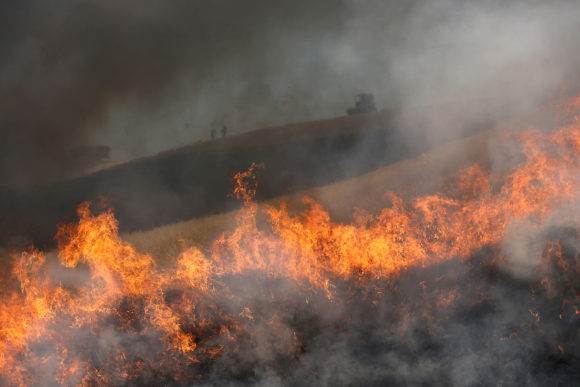Severe wildfire seasons have made it harder for homeowners to find insurance in high wildfire-risk areas, according to new data collected by the California Department of Insurance.
The data released in late-August from the CDI shows a 6% increase in insurer-initiated homeowner policy non-renewals in Cal-Fire State Responsibility Areas from 2017 to 2018, while ZIP codes affected by the devastating fires from 2015 and 2017 experienced a 10% increase in insurer-initiated non-renewals last year.
Wildfires in November 2018 were the most destructive in state history, topping more than $12 billion in insured losses. Most of the damages relate to the Paradise fire, which killed 86 people and destroyed roughly 19,000 buildings. A series of sweeping fires in late 2017 had been the most expensive, with claims topping $11.8 billion.
S&P Global Ratings reported earlier this week that 2020 reinsurance pricing in the aftermath of California wildfires will likely rise as reinsurers are finding 2017-2018 losses from wildfires in that state to be higher than expected.
Two insurer associations were quick to note an apparent omission in the CDI data.
Mark Sektnan, vice president for the American Property Casualty Insurance Association, and Rex Frazier, president of the Personal Insurance Federation of California, issued a joint statement in response to the release of the department’s data:
“Recent data released by the California Department of Insurance shows a slight increase in the number of homeowners policies being non-renewed in the areas impacted by recent wildfires and in those areas with the highest risk of devastating wildfire,” the statement reads. “The data, however, does not address the most important question — was the homeowner able to obtain insurance from another carrier?”
The statement notes that the CDI data shows that in high-to-moderate areas, the non-renewal rate held steady at 2%.
“For new policies, we see that carriers continue to write a significant number of policies in these areas,” the statement continues.
Despite paying out more than $26 billion in claims from the 2017 and 2018 wildfires, insurers remain committed to covering homes in rural and urban zones, according to the statement.
The CDI data also revealed the availability of homeowners insurance dropped in high-risk counties. From 2015 to 2018, the number of new and renewed homeowners’ policies fell by 8,700 in the 10 counties with the most homes in high or very high-risk areas.
These same counties saw a steady increase in new FAIR Plan policies during that timeframe, growing 177 percent, compared to only a 4 percent increase for the five counties with the lowest risk. The FAIR Plan provides insurance coverage as a last resort for homeowners who are unable to find coverage in the voluntary market.
Nearly 57 percent of new FAIR Plan policies are now written in State Responsibility Areas, which is up from 47 percent in 2015. FAIR Plan executives couldn’t be immediately reached for comment.
Data also shows a 49 percent increase in surplus lines policies in State Responsibility Areas between 2015 and 2018.
Wildfires have been driving more Californians into the surplus lines market, pushing up homeowners surplus premium volume to more than $122 million in 2018, according to figures the Surplus Line Association of California released in April.
“We have definitely seen increases in homeowners premiums and transactions in the surplus line market over the last few years, so it is clear that some of these consumers are finding coverage through surplus lines,” said Cliston Brown, the group’s vice president of communications and government relations. “Our industry overwhelmingly covers commercial lines, and even with the uptick we have seen, homeowners’ business still accounts for less than 2.5% of all California surplus line premiums.”
Brown added that “surplus line insurance can and does play an important role in filling gaps left when admitted carriers reconsider their levels of exposure.”
Topics Catastrophe Natural Disasters California Carriers Wildfire Excess Surplus Homeowners
Was this article valuable?
Here are more articles you may enjoy.



 SIAA Announces Strategic Partnership With Progressive
SIAA Announces Strategic Partnership With Progressive  New York Governor Hochul Vows to Tackle Insurance Affordability, Litigation and Fraud
New York Governor Hochul Vows to Tackle Insurance Affordability, Litigation and Fraud  Expense Ratio Analysis: AI, Remote Work Drive Better P/C Insurer Results
Expense Ratio Analysis: AI, Remote Work Drive Better P/C Insurer Results  Update: Verizon Says Service Restored After Thousands Affected by Outage
Update: Verizon Says Service Restored After Thousands Affected by Outage 


